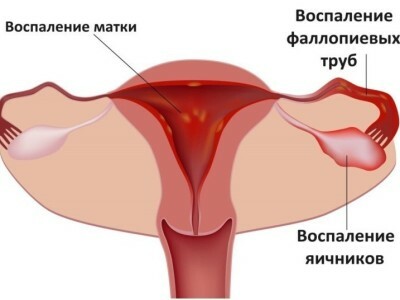 According to statistics, the symptoms of a panic attack are manifested in 45-70% of the world population, which is an impressive figure.
According to statistics, the symptoms of a panic attack are manifested in 45-70% of the world population, which is an impressive figure.
And often the first attack leads to a chain of follow-ups, which greatly complicates life for those who are prone to this condition.
What is its nature and reasons, how it manifests itself - this article will tell about it.
Contents
- Stories from life
- Novel, 25 years old
- Causes of panic attack
- Risk groups
- What diseases and syndromes can cause seizures
- Classification of attacks
- Symptoms of panic attack
- General picture of
- What happens at this time in the body
- Typical symptoms of panic attack syndrome
- Atypical symptoms of panic attack.
- Techniques for treating panic attacks
- Video: Panic attacks
Stories from life
Panic attack( PA) is an attack of sudden, unconscious and causeless fear and panic in a person caused by internal causes. This is not a disease as such, but a psychological disorder, which is also called a "vegetative crisis".
Panic disorder is a recurrence of attacks of unexplained panic.
Typically, attacks occur in crowded places or in confined spaces and last no more than an hour. Their regularity, on average, is up to three times a week.
It is noticed that often the propensity to PA is inherited.
Here's how people often describe their condition with such a disorder.
Roman, 25 years old
"One evening I was just watching TV when a terrible panic struck me: my heart was beating wildly, almost popping out of my chest, some animal fear appeared and a hot wave ran along the left side of my chest.
In my head immediately flashed: a heart attack! I was terrified that I was going to die. My head spun, and I, almost losing consciousness, called an ambulance. Doctors did something to me, they took my tests and left. When I asked later the results of the tests, I was told that everything was in order with my heart.
This statement was encouraging, I decided that it was an isolated case, and more this will not happen to me again. But three days later, when I was on the bus, the attack returned. It was very scary, I even began to choke, chills hit me.
I wanted terribly to jump out into the street, to fresh air. And, as soon as the bus stopped, I, barely alive and beside myself with horror, jumped out of it, knocking someone off my feet and mumbling an apology.
After that, I began to fear the recurrence of such attacks, I had a fear that I was going crazy. The states of inexplicable panic have become quite regular for me, and this is a great poison for my life. I can not work properly, because it can happen while working.
I can not sit with friends in a cafe - it happened that, feeling a strong heartbeat and another surge of horror, I ran away from there in a daze, afraid that they would not know about my condition and did not turn away from me. And even in the middle of the night, horror strikes me sometimes, the whole body paralyzes and I begin to suffocate. .. »
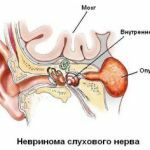 What is the neurinoma of the auditory nerve and how is this type of tumor treated.
What is the neurinoma of the auditory nerve and how is this type of tumor treated. One of the manifestations of a panic attack is cerebrospinal fluid hypertension syndrome. How does he manifest himself and what to do in this case?
Causes of Panic Attack
As a rule, panic attacks are a consequence of such reasons:
- multiple stressful situations, the experiences of which were forced into the subconscious;
- conflicts in the family, at work;
- trauma of a psychological nature, which was suppressed by willpower;
- nervous or physical overwork;
- waiting for any stress;
- emotional, mental or mental stress;
- hormonal failure;
- sharp pain or a feeling of incomprehensible discomfort in the body, which leads to anxiety and a sudden fear of an imminent death;
- abuse of alcohol, stimulants;
- Mental disorders: depression, various phobias.
Risk groups
Patients age ranges from 20 to 45 years, called the period of "responsible decisions", when a person faces questions about the establishment of a family or about the  work place.
work place.
Often the signs of panic attack of appear in women and more often , than in men 3-4 times.
Scientists attribute this to the fact that the female body is constantly experiencing a variety of hormonal changes.
At the same time, the fact that men suffer less from panic attacks can be explained by the fact that many of them prefer to struggle with their condition with the help of alcohol, ignoring the appeal for help to specialists.
It was also found that the at the risk of for the development of the disease often includes people with an alarming and suspicious character.
As a rule, the level of the anxiety hormone in their blood is overestimated, which leads to panic attacks.
What diseases and syndromes can cause attacks of
Symptoms of panic attacks can arise as a result of various body disorders, such as:
- Pheochromocytoma is a hormonally active tumor that occurs in the endocrine system and releases a large amount of adrenaline, noradrenaline and dopamine.
- Phobia is a pathological condition that results in an irrational and uncontrollable fear of any known object.
- Diseases of the endocrine system, such as diabetes mellitus, hyperteriosis.
- Somatoform dysfunction is a patient's complaint about the disorder of an organ under the control of the autonomic nervous system, while in fact this organ physically works normally.
- Depressive disorders - reduced or depressed mood, loss of interest in activities.
- Mitochondrial diseases are disorders of mitochondrial functions, which are hereditary in nature and lead to a violation of tissue respiration.
- Heart diseases.
- Vegeto-vascular dystonia is a disease that manifests itself in the failure of many internal organs and systems, although it is impossible to detect any changes in the examination.
- Neurocirculatory dystonia( NDC) is a disease characterized by cardiovascular, vegetative and respiratory disorders, asthenia, intolerance to stresses and physical exertion.
- Taking certain medications.
Classification of attacks
Classes distinguish three types of panic attacks:
- Spontaneous - characterized by the fact that it occurs suddenly and without a reason.
- Situational - occurs in conditions that are psychotraumatic for the patient, or as a result of the expectation of such a situation.
- Conditionally-situational - manifested when the patient is exposed to a particular "activator" of chemical or biological origin: when taking alcohol, due to changes in the hormonal background. The connection is not always clearly traced.
Symptoms of panic attack
General picture of
Usually attacks occur in such an way: the person is relaxed, engaged in everyday affairs, shopping in the store, sitting at a lecture, watching TV at home or sleeping, when suddenly he is covered by a wave of completely unreasonable and strong fear.
There is dizziness, loss of soil underfoot and strong palpitations.
As a result, a person is greatly frightened, he has a fear of death and thoughts of a heart attack or stroke. The patient may even lose consciousness or immediately begin to call an ambulance, being terrified of his condition.
Usually patients after the first case begin to experience anxiety for their health, with horror awaiting the next attack.
Some start referring to different doctors, without realizing that their health is not right. Doctors, finding nothing, can either count the patient as a hypochondriac, who himself inventing non-existent diseases.
Either put different diagnoses and prescribe a treatment that, in the end, does not prevent another attack.
Against this background, people often develop all kinds of phobias, especially fear of open space. He ceases to go out on his own, communicate with people, can not leave the house without a sense of horror.
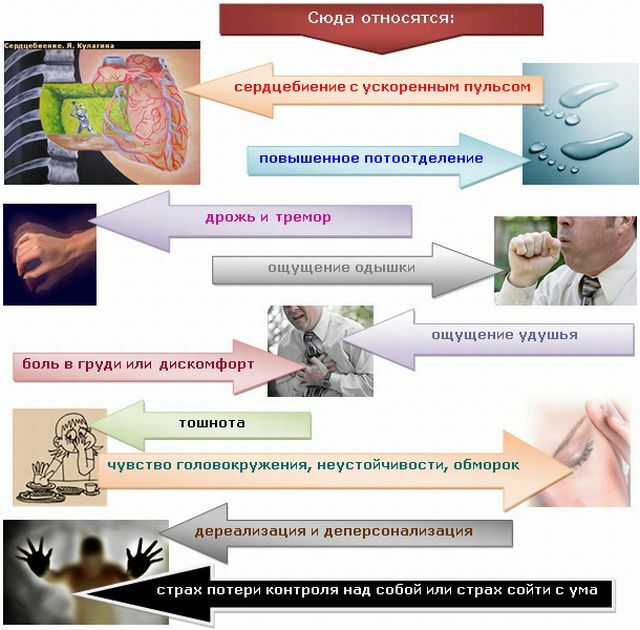
What happens at this time in the body
After a sudden fear, is activated adrenaline, giving the nervous system the signal "run or fight."
The heart starts to beat with frenzied strength, breathing becomes intense, there is a profuse sweating, as a result of which the patient may get chills.
Due to hyperventilation, dizziness, numbness of the limbs may occur. The body is ready to escape from danger. But there really is no danger, there's no one to run away from.
Quite often against the background of this patient develops depression from constant thoughts about the return of the attack, that this can occur in front of friends, the possible presence of a serious disease, there are thoughts of an imminent death.
Often the patient is afraid to go insane, lose control over himself. As a result, the alcoholism often becomes a consequence of the disease as a means of escape.
Also, people suffering from PA, try to avoid repetition of situations and visits to places in which they were seized by an attack.
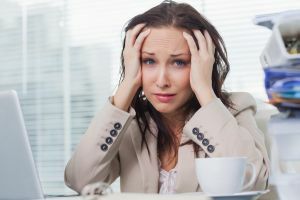 Because of this, agoraphobia often develops, the patient is afraid of being in a crowded place, in the open space, his is social disadaptation.
Because of this, agoraphobia often develops, the patient is afraid of being in a crowded place, in the open space, his is social disadaptation.
This leads, in turn, to the fact that a person is either afraid to leave his house, or to remain alone. In the second case, he becomes literally a burden to the people around him, because without them he can do nothing or go somewhere.
The duration of each attack of is a highly individual indicator. Attack can last as a few minutes and hours, and the frequency of repetitions varies from once a day to one - two times per month.
Typical symptoms of panic attack syndrome
Usually panic attacks manifest as 4 or 5 symptoms of the following, but the first point is always:
- attack of fear, panic, anxiety, internal tension;
- strong palpitation, rapid pulse;
- high blood pressure;
- lack of air, suffocation;
- nausea;
- increased sweating or chills;
- dizziness, precancerous condition;
- chest pain left;
- sensation of unreality of what is happening, memory loss may occur;
- fear of death;
- fear of losing control over oneself, going insane;
- numbness or tingling in the limbs;
- confusion of thoughts;
- when you try to sleep in your ears appears a high frequency sound, there is a sense of falling, frightening images are created in your brain;
- there are phobias, for example, fear of swallowing food, going out into the open area, fear of enclosed space.
Atypical symptoms of panic attack.
If the patient develops the following symptoms as a result of an attack, this indicates an atypical panic attack:
- impaired hearing, vision;
- there are cramps in the muscles;
- gait becomes insecure;
- there are bouts of vomiting;
- appears "a lump in the throat";
- the patient loses consciousness;
- occurs profuse urination.
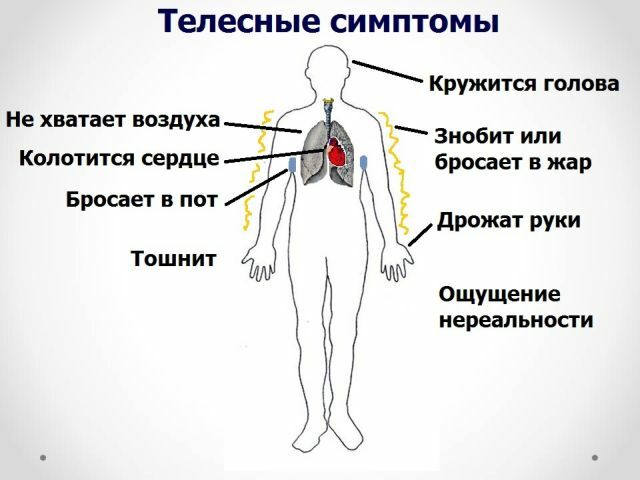
So, we could notice that in fact often in a panic disorder, that is, in the repetition of panic attacks, the patient himself is more to blame than his body.
The thing is that person starts to worry and constantly scrolls the situation of , which scared him for the first time. As a result, his psyche is in constant tension and at times breaks down, which further frightens the patient.
If to treat attacks as temporary disruption of the functioning of the body, then subsequent seizures, if they happen, then they will flow much easier, with a lower frequency of manifestation.
Treatment methods for panic attacks
Read more about the treatment in our article.
 How to permanently get rid of panic attacks - treatment with hypnosis, pills, homeopathy and folk remedies
How to permanently get rid of panic attacks - treatment with hypnosis, pills, homeopathy and folk remedies Sudden panic attacks can significantly complicate the life of their victims. Many people develop depression as a result of such conditions. ..
Video: Panic Attacks
Uncontrolled panic attacks are a very common problem. Many people cure them, but not all achieve successful results.

